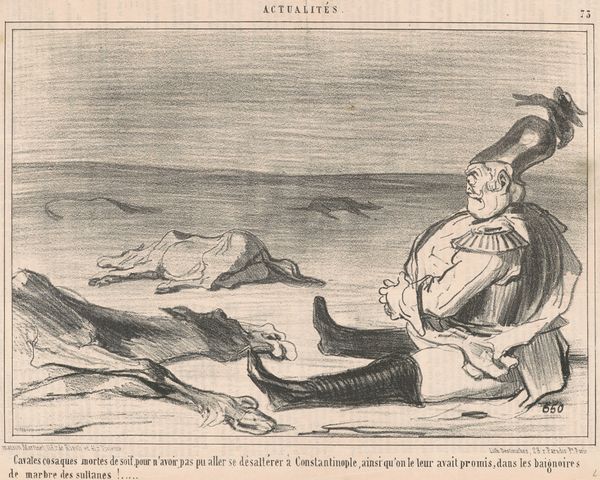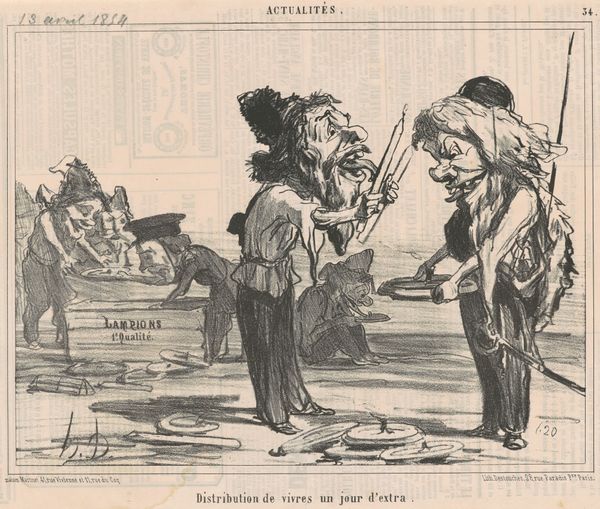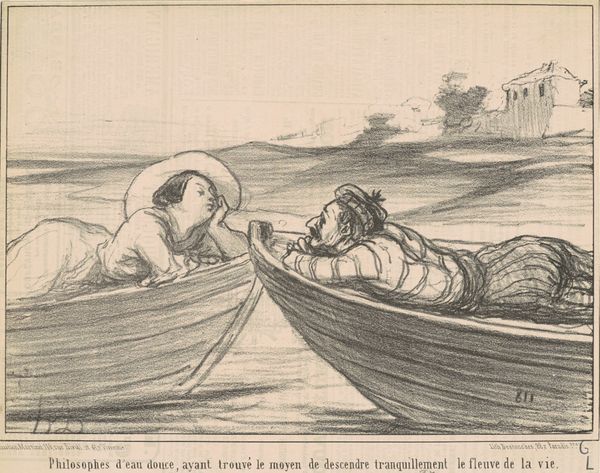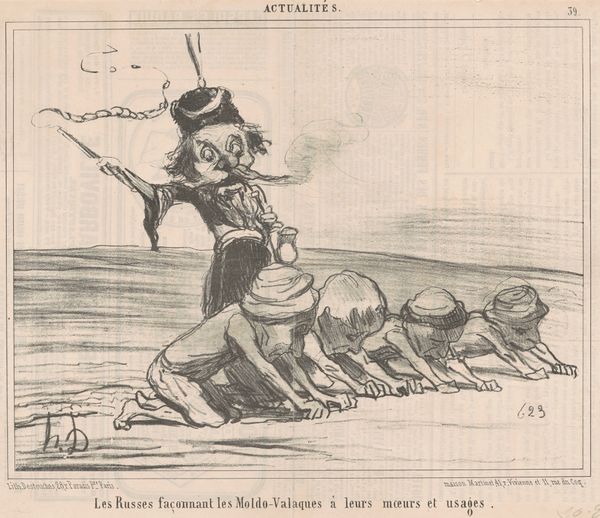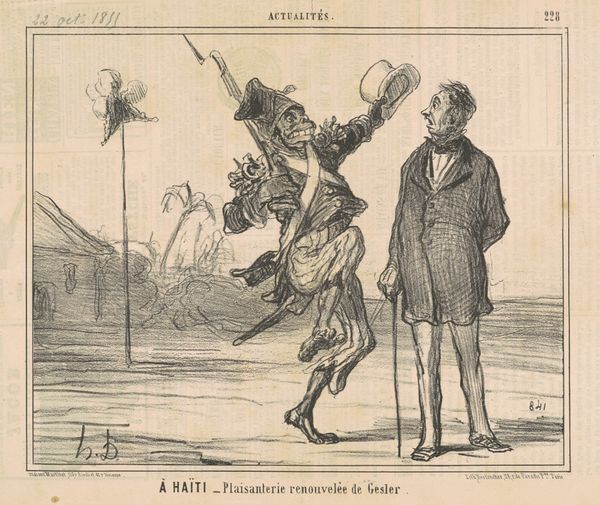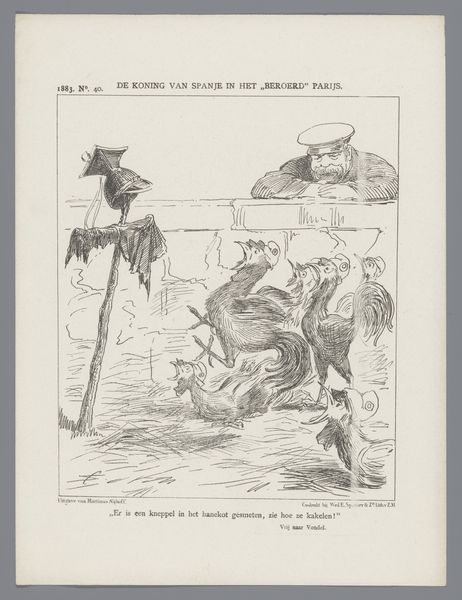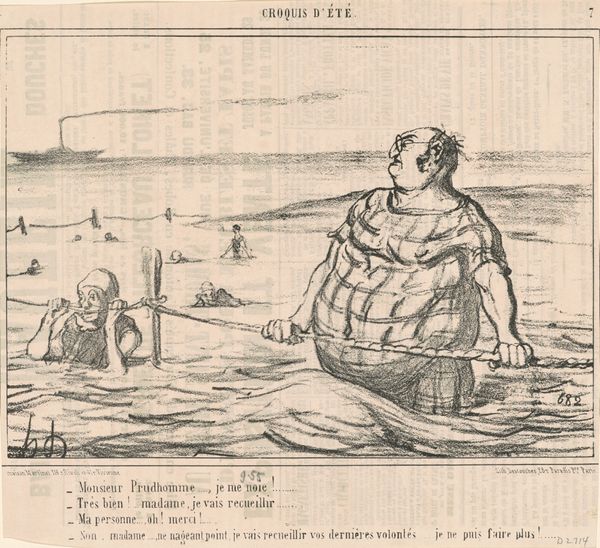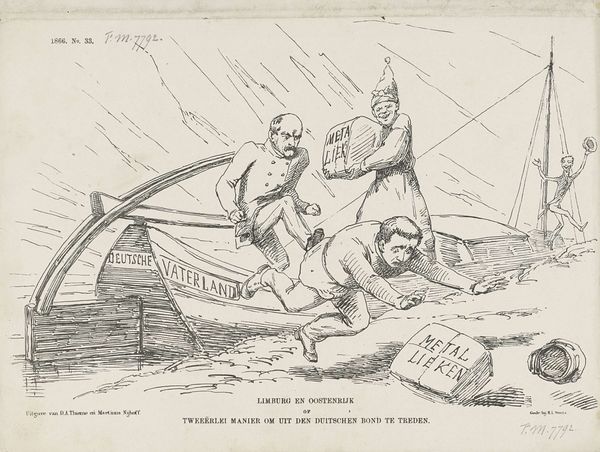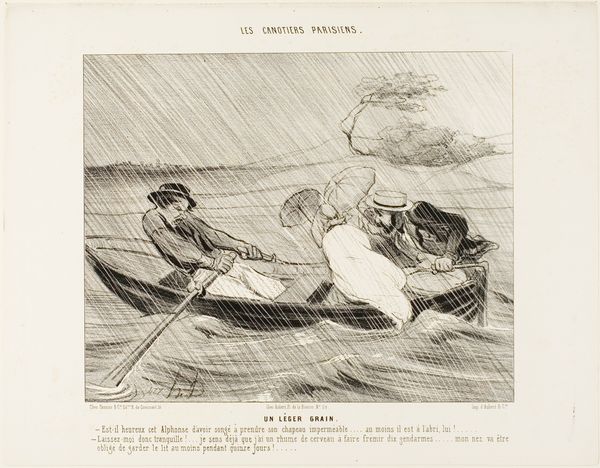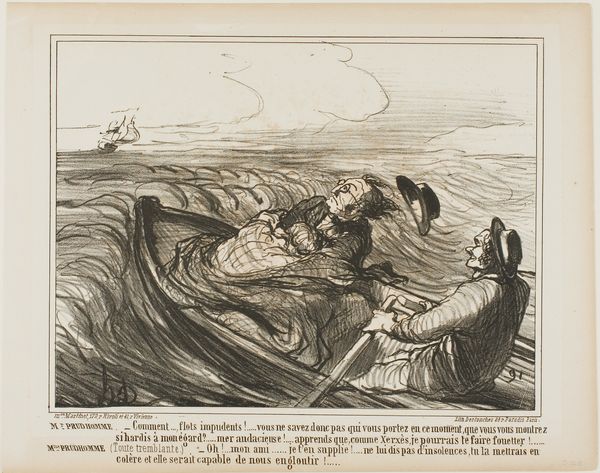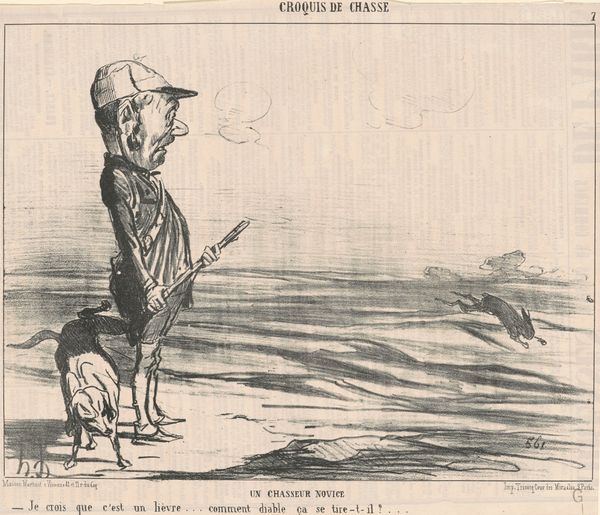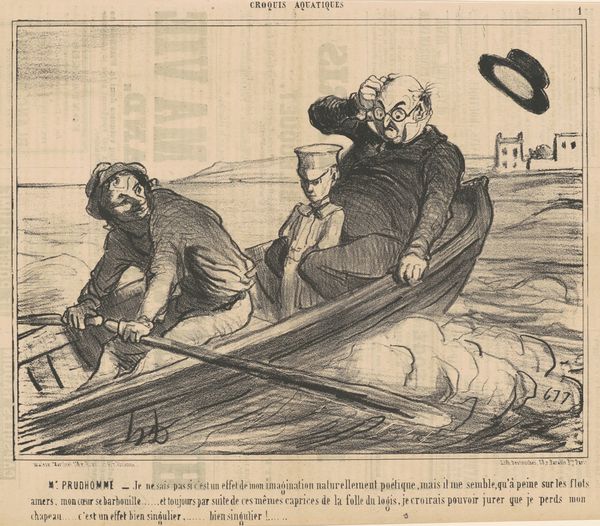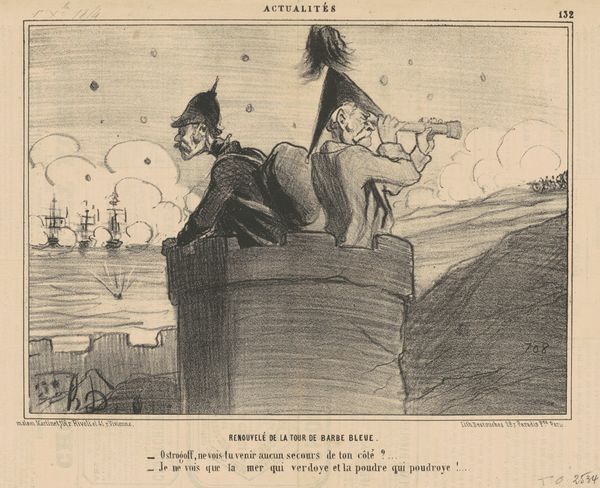
lithograph, print
#
lithograph
# print
#
caricature
#
old engraving style
Copyright: National Gallery of Art: CC0 1.0
Curator: We're looking at "Je ne puis en croire ma lorgnette ..." a lithograph by Honoré Daumier, dating from the 19th century. Editor: The lines! They carve out such clear, expressive figures from, quite frankly, a chaotic visual field. Curator: Chaos is intrinsic. Note Daumier's skillful employment of cross-hatching; it creates tonal depth, building form economically. What readings do the semiotic markers within suggest? Editor: Clearly, it's a statement on England, here represented as a draped figure on the bank, seemingly imploring a boat containing people to come ashore, as seen from France, where we find our character looking at the scene with his spyglass. The political commentary must be thick. I'd say the exaggerated features indicate satire, but I don’t have a grip on who Kossuth is. Curator: Consider the line quality again. It’s not merely representational but active, shaping our understanding of the subject. See how it models the protagonist's clothes with hatching, in sharp contrast with how it renders the English figure more broadly? Daumier employs mark-making as critical inflection. Editor: All very true, but isn't the iconography fascinating? England reaches for those aboard. Is Daumier commenting on a specific political dynamic through allegory? Why Kossuth? What's the emotional heft? The artist employs traditional symbols—a reaching hand is a timeless appeal for help, the figure with a spyglass reminds us of our contemporary age. Curator: You seek simple equivalences? I see the contrast between states not just in the obvious labelling. Rather the sharp visual economy, and Daumier's dynamic compositions generate the primary reading. It doesn’t point; it enacts. Editor: Fair, but I still can’t shake the need to untangle those historical references. The political environment always has the last word. Curator: Always? Interesting. The piece intrigues as an illustration of core formal tenets about lithography’s compositional range. Editor: Yes, but also, the persistence of political symbols across history is telling—aren't we always trying to cross the water toward salvation?
Comments
No comments
Be the first to comment and join the conversation on the ultimate creative platform.
